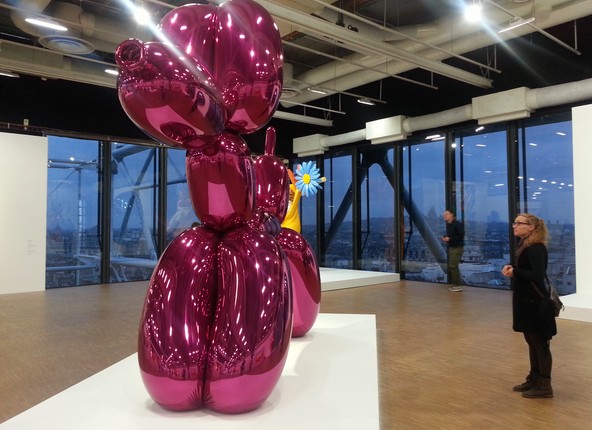Jeff Koons’ retrospective exhibition: expectation, contrast and disappointment
After having been exhibited in New York City, “Jeff Koons: A Retrospective” is now in the Centre Pompidou in Paris until April 27, 2015. Jeff Koons is one of the most controversial contemporary artists. This retrospective, with Scott Rothkopf as exhibition curator and Bernard Blistène as curator of the Paris show, comprehensively presents Koons’ work at various stages of his 35-year career. Located in the influential contemporary art institution in Paris, alongside Atelier Brancusi and the remarkable retrospective of Marcel Duchamp, could Koons’ exhibition and artworks live up to the high expectations?
Rabbit and the Inflatables
Koons’ initial inflatable work, “Inflatable Flower and Bunny,” displayed at the entrance of the exhibition was echoed by the silvery “Rabbit” one third of the way in. The two share similar forms, but the features of the plastic toy disappeared in “Rabbit’s” smooth and reflective surface. “Rabbit” was described in the caption next to the artwork as “one of Jeff Koons’ most iconic works,” — although such importance is not signified with any special treatment of its display in the exhibition. On the other hand, it recalls Bracusi’s refined shiny bird sculpture, “Leda” (1926), which was created decades before the Koons work. While the former’s perfect surface relates to the infinite and indefinable, Koons’ subject matter does not depart far from popular culture and Pop Art aesthetics, despite the change of materials.
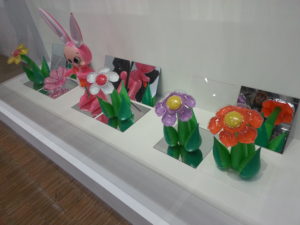
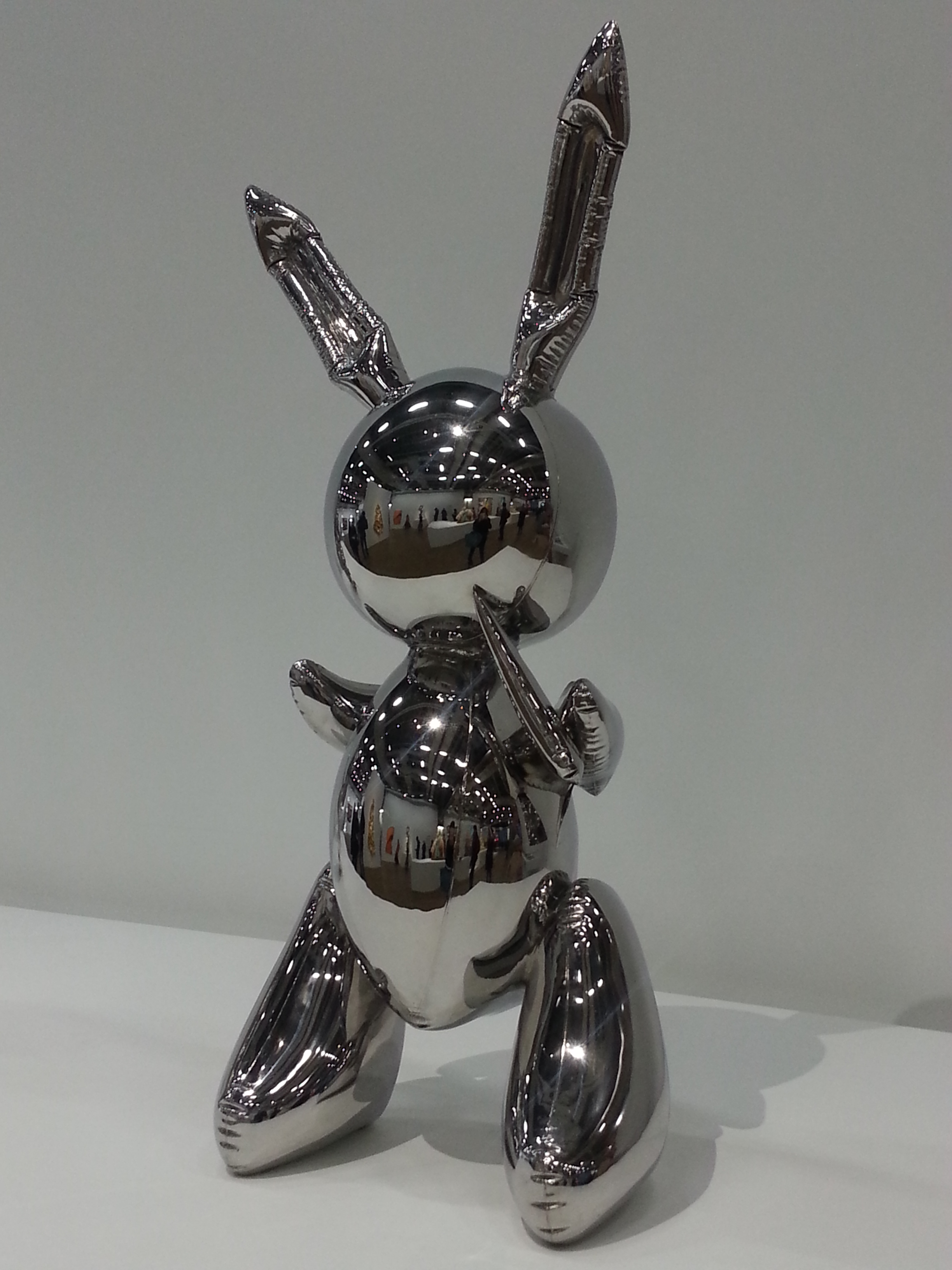
Celebration
Not far from the rather subtle “Rabbit” stands the attention-seeking “Ballon Dog.” A magenta version of the 3-meter orange painted stainless steel “Balloon Dog” sold for $58.4 million last year, a record price for a living artist. This oversized “Balloon Dog” is placed in the center of the exhibition section of the “Celebration” series, surrounded by the large blue “Moon” and red “Hanging Heart.” However, there does not seem to be any dialogue among the works except for reflecting one another from their surfaces. From “Rabbit” to “Balloon Dog” — both iconic — the link is obviously Koons’ gesture of “exaggerating the aura of cheap, ordinary things, aggrandising them into works of art in increasingly expensive materials.” These point us to the ready-mades of Duchamp. While Duchamp’s “Fountain” was an act of anti-market and anti-authorship, Koons has diverted to commodification of art in capitalist art market.
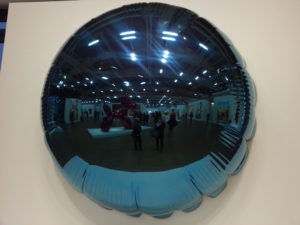
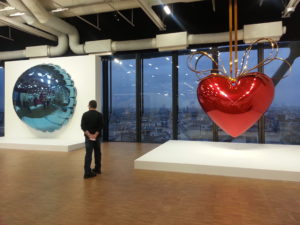
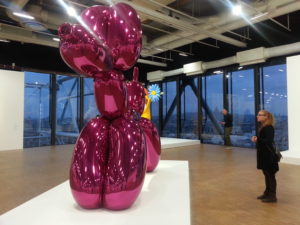
Gazing ball
This latest series of Koons’ in the last part of the exhibition shows classical sculptures replicated in plaster, each with a sharp blue balloon-like sphere. The classical beauty of the sculptures is placed against representation of American popular culture by the modern blue mirror balls which come from suburban ornaments in his home state of Pennsylvania. Koons is trying to address the future decorative nature of artworks. The plain and dull texture of the plaster is contrasted by the shiny reflective gazing balls which catch viewers into the artwork. However, when one searches to find something deeper out of such contract and reflection, one can still only find the externalized image of oneself. There is then a sense of narcissism, not something surprising from Koons’ art. David Zwirner, the art dealer for Koons, quoted Koons saying that, “If you’re critical, you’re already out of the game.” One critique replied to this, “His narcissism makes him incapable of self-editing.” Indeed, it seems not obvious how the choice of each sculpture model could give either a different message or a higher artistic value, except for the selling of one more piece of decoration. In this sense, it might be painful to claim them as descendants from Duchamp’s ready-mades in which the act of choosing and the choice of the objects is the notion.
![“Gazing Ball [Farnese Hercules]”, 2013](https://thespeakernewsjournal.com/wp-content/uploads/2015/04/2015-01-28-13.27.24-225x300.jpg)
![“Gazing Ball [Ariadne]”, 2013](https://thespeakernewsjournal.com/wp-content/uploads/2015/04/2015-01-28-13.28.04-300x225.jpg)
Viewing these three major iconic series from Jeff Koons three and a half decades of work, the progression of time does not generate any greater surprise or insights from Koons’ works. The New Yorker’s Peter Schjeldahl, reviewing the Whitney show, called Koons “the signal artist of today’s world,” claiming that, “If you don’t like that, take it up with the world.” In this regard of generalizing and externalizing his artworks to the responsibility of the contemporary world, it might seem that if one is disappointed by the exhibition, such disappointment should be directed to the wider world. However, it is doubtful that this is the case when we just turn our eyes to Duchamp or Brancusi next door, whose art is still giving much profound meaning to our world besides money and market.
By Rickovia Leung
